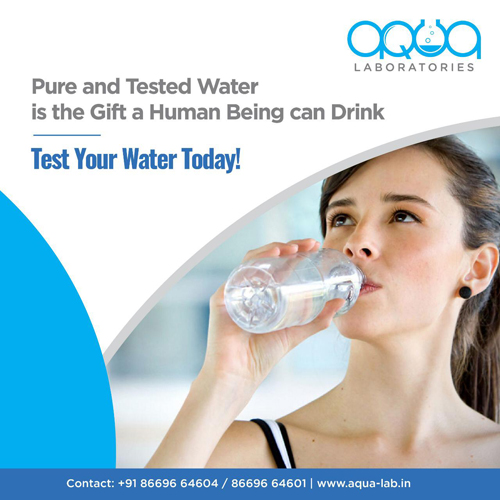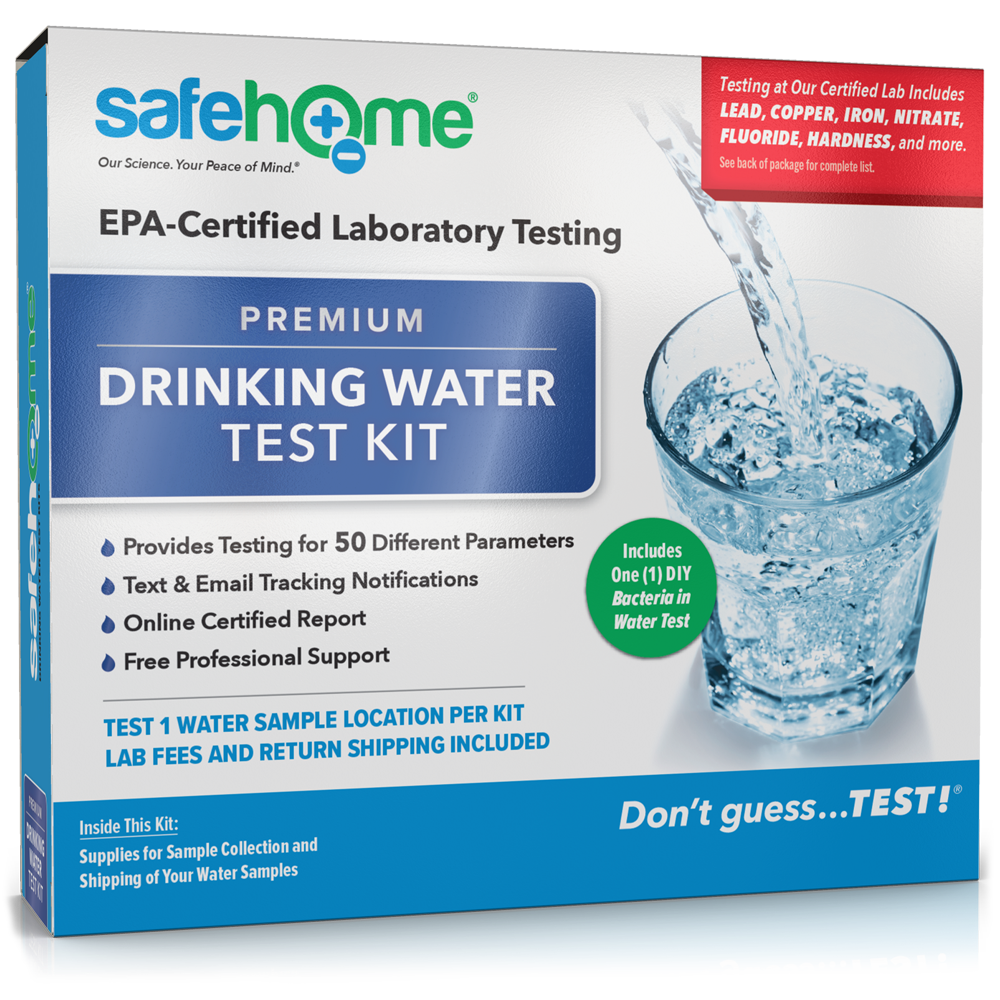Understand the Importance of Water Testing in Keeping Conformity With Wellness Specifications
In the realm of public health and wellness, understanding the value of water screening is indispensable for keeping compliance with strict health standards stated by authoritative bodies like the WHO and EPA. This technique works as a frontline defense against the infiltration of harmful impurities, ranging from microbial virus to hazardous chemicals. Yet what are the accurate techniques utilized in water screening, and exactly how do they guarantee that our most crucial resource continues to be unpolluted? As we check out these facets, the wider ramifications for regulatory conformity and environmental sustainability start to unfold, welcoming more contemplation on this crucial topic.
Secret Health Requirements for Water
Guaranteeing the security and quality of alcohol consumption water is critical, as it directly impacts public health and wellness. Rigid health standards are established to safeguard people from waterborne conditions and contaminants that can bring about adverse health and wellness impacts. The Globe Health And Wellness Organization (WHO) and nationwide agencies like the Epa (EPA) in the United States established guidelines and regulative limits for numerous physical, chemical, and organic specifications in alcohol consumption water.
These criteria are based on considerable scientific study and are periodically evaluated to incorporate technological advancements and new searchings for. Trick parameters include microbial contaminants such as microorganisms and infections, chemical pollutants like lead and arsenic, and physical features such as turbidity and pH degrees. Conformity with these criteria makes certain that water is cost-free from harmful materials and is cosmetically pleasing to the consumer.
Water testing plays an essential role in validating conformity with these health standards. Regular tracking and screening assistance recognize possible problems prior to they posture a significant health and wellness threat, permitting for prompt treatment and removal. By sticking to these criteria, water service providers can preserve public confidence in the security of the area's water, thereby securing public wellness effectively.
Common Contaminants Detected
When examining water top quality, what are the most widespread contaminants that have a tendency to be identified? Microbial pathogens, consisting of germs like Escherichia coli and protozoans such as Giardia and Cryptosporidium, are frequently found in water sources, presenting substantial health and wellness risks if consumed.
Chemical impurities are additionally a key issue. Nitrates, frequently arising from farming plant foods, can bring about serious health issues, particularly in infants. Heavy metals such as arsenic, mercury, and lead, usually presented via commercial discharge or all-natural mineral down payments, can have lasting poisonous impacts. Unstable natural substances (VOCs) and pesticides, results of commercial tasks and farming techniques, additional contribute to water contamination.
Inorganic compounds such as fluoride and chlorine, although often intentionally contributed to water for wellness advantages, can come to be bothersome at elevated levels. Emerging contaminants, including pharmaceuticals and personal treatment products, are progressively being identified, increasing concerns concerning their potential influence on human health and communities. Attending to these impurities is essential for guarding public health and wellness and making sure water top quality conformity.
Methods of Water Screening
Water testing's accuracy is essential for identifying pollutants and making certain security conformity. Water Testing Service. To achieve precise results, numerous methods are used, each customized to find details impurities and align with regulatory requirements. One widespread method is spectrophotometry, which measures the absorption of light by chemical materials in the water, consequently recognizing aspects like phosphates and nitrates. This approach is advantageous for its level of sensitivity and uniqueness.
Chromatography is another advanced method made use of, especially for organic pollutants. By separating combinations into specific parts, it enables thorough evaluation of complex toxins. Gas chromatography and fluid chromatography great post to read are frequently made use of versions, each fit for various substance kinds.
Microbiological screening is crucial for detecting pathogens such as bacteria, infections, and protozoa. Methods such as membrane filtering and multiple-tube fermentation are utilized to society and determine continue reading this microbial visibility. These methods are essential in securing public wellness by ensuring microbial safety.

Benefits of Routine Screening
Recognizing the numerous techniques of water screening highlights the necessity of normal screening methods to preserve water quality. Routine water screening serves as a positive action to determine prospective pollutants before they escalate right into major health risks. By constantly keeping an eye on water high quality, companies can discover toxins such as germs, hefty metals, and chemical deposits early, permitting prompt interventions that protect against carcinogen and pricey removal efforts.

Furthermore, normal screening makes sure that water systems adhere to recognized health standards and laws. This compliance is important for preventing lawful penalties and keeping the depend on of customers and stakeholders. Regular water high quality evaluations assist recognize fads or changes in water make-up, giving useful data that can lead operational decisions and resource administration strategies.
In addition, normal water testing fosters public self-confidence by showing a commitment to security and transparency. In sectors such as municipal water supply, food, and health care processing, keeping high water high quality standards is essential to protecting public health and wellness. Normal testing likewise sustains ecological sustainability by making certain that water resources are handled sensibly. In general, the benefits of routine water screening extend past compliance, enhancing operational efficiency, public safety and security, and ecological stewardship.
Tips to Make Certain Compliance
To guarantee compliance with water quality laws, organizations must carry out a structured method including both rehabilitative and preventative steps. A comprehensive threat analysis need to be conducted to identify prospective contamination sources and susceptabilities within the water system. This evaluation notifies the advancement of a customized water administration strategy that Read More Here details specific testing procedures, regularity, and parameters required to fulfill regulatory requirements.
Subsequent to the planning stage, organizations should establish a timetable for routine water screening that abides by both regional and nationwide guidelines. Using recognized research laboratories makes sure the precision and integrity of test results. Any type of inconsistencies from acceptable water quality requirements have to motivate instant corrective actions, such as system cleansing, repair work, or modifications in therapy processes.
In addition, keeping detailed records of all screening tasks, outcomes, and restorative activities is crucial for showing conformity during audits and evaluations. Normal training and updates for team entailed in water management processes are important to guarantee they recognize current laws and ideal methods.
Conclusion
Routine water screening is necessary for preserving conformity with wellness requirements established by organizations such as That and EPA. Proactive surveillance secures public health and wellness, supports regulative compliance, and fosters confidence in water high quality management.
In the world of public wellness, comprehending the value of water testing is indispensable for maintaining conformity with stringent wellness standards set forth by authoritative bodies like the WHO and EPA. By adhering to these requirements, water service providers can maintain public confidence in the safety and security of the neighborhood's water supply, thereby securing public health successfully.

In sectors such as municipal water food, health care, and supply processing, maintaining high water top quality criteria is indispensable to securing public health.
Comments on “Dependable Water Testing Services Near Me: Know What remains in Your Water”